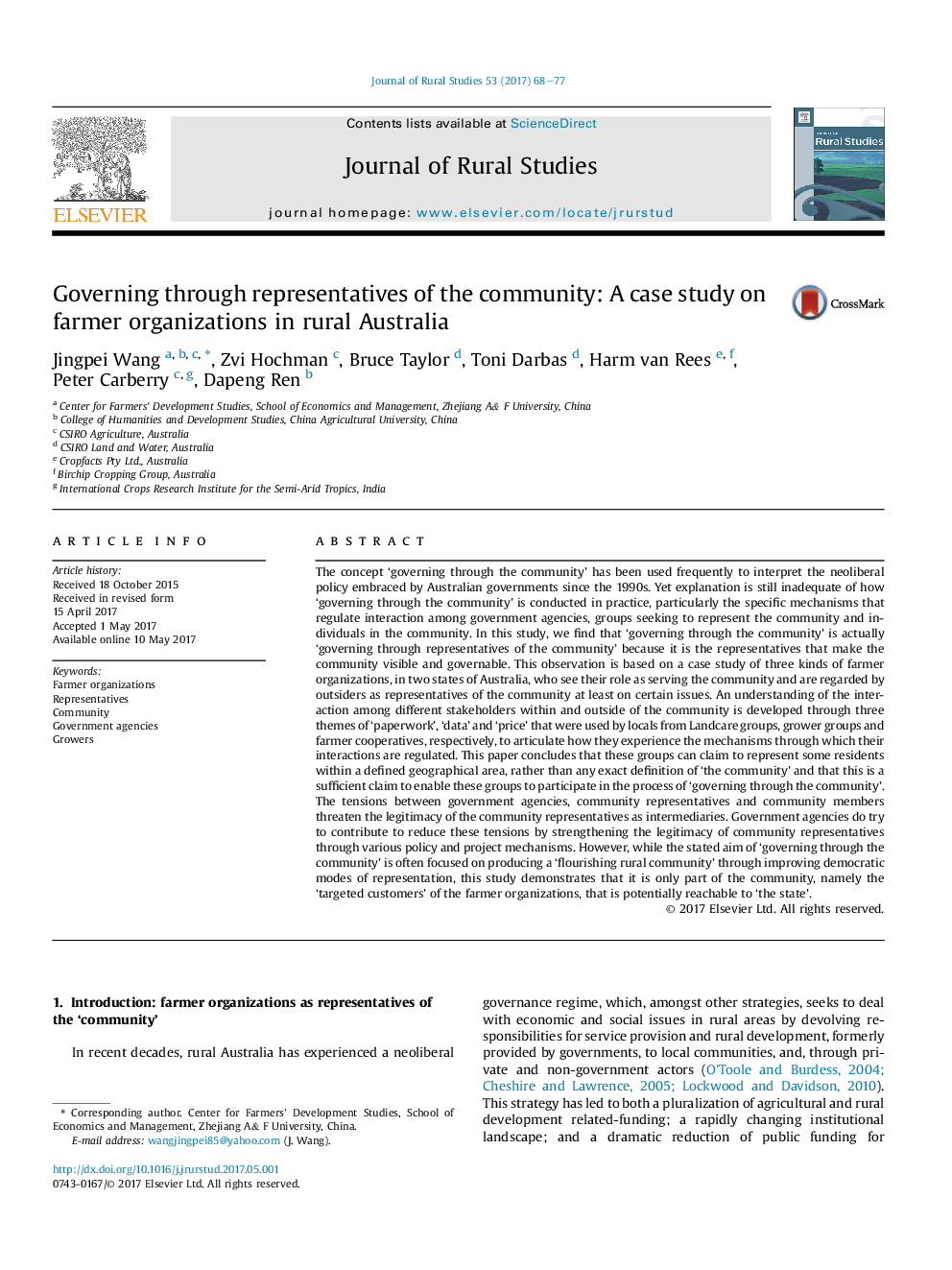| Article ID | Journal | Published Year | Pages | File Type |
|---|---|---|---|---|
| 6459984 | Journal of Rural Studies | 2017 | 10 Pages |
â¢Community representatives make the community visible and governable.â¢'Paperwork', 'data' and 'price' are key mechanisms of multi-party interactions.â¢Tensions among stakeholders threaten the legitimacy of community representatives.â¢Governments' efforts to ease tensions fail to bring broader community into reach.
The concept 'governing through the community' has been used frequently to interpret the neoliberal policy embraced by Australian governments since the 1990s. Yet explanation is still inadequate of how 'governing through the community' is conducted in practice, particularly the specific mechanisms that regulate interaction among government agencies, groups seeking to represent the community and individuals in the community. In this study, we find that 'governing through the community' is actually 'governing through representatives of the community' because it is the representatives that make the community visible and governable. This observation is based on a case study of three kinds of farmer organizations, in two states of Australia, who see their role as serving the community and are regarded by outsiders as representatives of the community at least on certain issues. An understanding of the interaction among different stakeholders within and outside of the community is developed through three themes of 'paperwork', 'data' and 'price' that were used by locals from Landcare groups, grower groups and farmer cooperatives, respectively, to articulate how they experience the mechanisms through which their interactions are regulated. This paper concludes that these groups can claim to represent some residents within a defined geographical area, rather than any exact definition of 'the community' and that this is a sufficient claim to enable these groups to participate in the process of 'governing through the community'. The tensions between government agencies, community representatives and community members threaten the legitimacy of the community representatives as intermediaries. Government agencies do try to contribute to reduce these tensions by strengthening the legitimacy of community representatives through various policy and project mechanisms. However, while the stated aim of 'governing through the community' is often focused on producing a 'flourishing rural community' through improving democratic modes of representation, this study demonstrates that it is only part of the community, namely the 'targeted customers' of the farmer organizations, that is potentially reachable to 'the state'.
